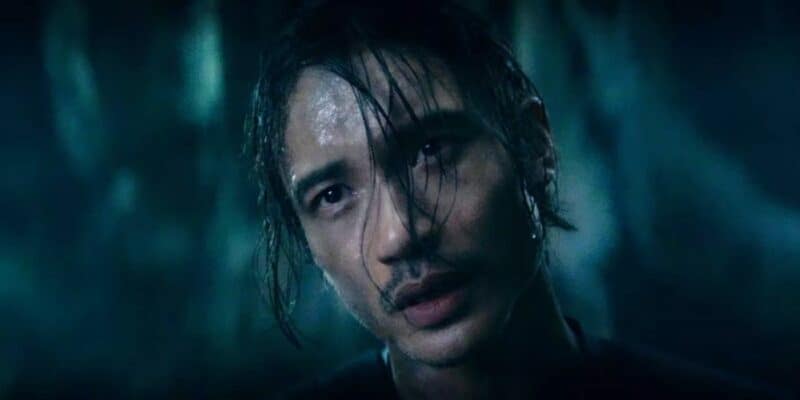The Acolyte Season 2 would have revealed so much.

Star Wars and The Acolyte
Long before the Skywalker saga began, The Acolyte invited fans into a rarely explored chapter of the Star Wars timeline–the High Republic era. Created by Leslye Headland, the series peeled back the layers of the Jedi’s so-called Golden Age, revealing the first traces of Sith influence and offering a deeper look at how the Force could be interpreted in vastly different ways.
While its ambition was clear, The Acolyte quickly became one of the most hotly debated Star Wars entries in years. Much like Rian Johnson’s Star Wars: Episode VIII–The Last Jedi (2017), the series sparked waves of discussion across social media, with fans dissecting everything from lore decisions to the show’s tone and representation.

Despite its creative storytelling and strong performances, the eight-episode series ultimately came to an abrupt end. Reports indicated that The Acolyte was canceled due to underwhelming viewership. Many viewers, however, interpreted the decision as a response to vocal critics online who had targeted both the show’s creative direction and its cast–including Amandla Stenberg (Osha/Mae Aniseya), Lee Jung-jae (Jedi Master Sol), Manny Jacinto (Qimir/The Stranger), and Jodie Turner-Smith (Mother Aniseya).
From the moment it was introduced as a female-centric Star Wars project, The Acolyte drew strong attention. The series, guided by Headland—a queer woman showrunner—and featuring a diverse ensemble, earned recognition for broadening the saga’s storytelling lens. Still, it faced backlash from corners of the internet, with detractors branding it “woke” and accusing the show of focusing too heavily on social commentary.

Disney Entertainment co-chairman Alan Bergman later explained that budgetary challenges made a second season difficult to justify. Yet new analytics hinted that audience engagement might have been stronger than initially believed. Data from Parrot Analytics revealed that The Acolyte actually surpassed Obi-Wan Kenobi, The Book of Boba Fett, and even Dave Filoni’s Ahsoka in demand metrics—suggesting that financial constraints, rather than fan response, played the greater role in its cancellation.
Had Season 2 gone forward, the story would have likely deepened its focus on character connections and personal histories—threads that have since been expanded through companion materials. According to “Star Wars: The Acolyte Visual Guide”, several intriguing details about Qimir’s past were officially confirmed.

The Acolyte Season 2
Episode 8 introduced a mysterious Sith presence—identified as Darth Plagueis—on Qimir’s stormy homeworld. The guide reveals that this oceanic planet is home to “an intelligent reptilian species that lives far from the islands.” Fans and outlets such as The Holo Files (via The Direct) have theorized that the world may be Bal’demnic, a location from Star Wars Legends where Darth Plagueis once killed his master, Darth Tenebrous. The planet’s reserves of cortosis—a lightsaber-resistant metal—also connect directly to Qimir’s distinct armor.
Additional lore sheds light on Qimir’s ties to the galactic underworld. The visual guide confirms that he “spent some time gunrunning in Hutt Space,” an area controlled by the infamous Hutt Clan, including Jabba the Hutt. This background frames Qimir as a far more dangerous and cunning figure than his calm demeanor might suggest.

The guide lists Qimir’s age as “unknown,” adding another layer of intrigue. His background in pharmaceuticals—referencing “a rare nori-inkal from Boothi IV” with “an oily serum that revitalizes aged skin and eliminates wrinkles”—implies he may have lived much longer than anyone realizes.
Even his Sith status is shrouded in ambiguity. The guide refers to him as “a pretender to [Sith] lineage… Whether he is the true heir to the Sith is a mystery no one will survive to solve.” Meanwhile, his eerie helmet is revealed to be purely “cosmetic,” forcing him to depend on the Force rather than vision in battle.

The Acolyte Season 2 and Disney’s Sequel Trilogy
Now, more has been revealed regarding Qimir’s dark side tendencies, including an insane connection to Disney’s polarizing sequel trilogy. The Acolyte, which has returned to the forefront of the franchise due to the imminent release of “The Art of Star Wars: The Acolyte (Season One)” (2026), would have revealed just how integral Qimir/The Stranger was to the franchise’s future.
“It was in the design of the character, as well as knowing that we were going to introduce Darth Plagueis, who has to end up with Palpatine as his apprentice,” Leslye Headland said in the book, per SFFGazette. “Following the Rule of Two–a precept that limited the Sith to just two at any given time, a master and an apprentice–one way to keep it going is if the Stranger is the first Knight of Ren, part of a Sith-adjacent cult that we know eventually survives.”
This is a major connection to a part of the sequel trilogy that was, for the most part, completely overlooked.

Who Are the Knights of Ren?
The Knights of Ren have long fascinated Star Wars fans as one of the franchise’s most mysterious dark side factions. First introduced in Star Wars: Episode VII–The Force Awakens (2015) and fully appearing in Star Wars: Episode IX–The Rise of Skywalker (2019), the group embodies the darker, more primal aspects of the Force—warriors who live by strength, instinct, and chaos rather than the rigid hierarchy of the Sith. Their name comes from the title “Ren,” which represents a philosophy of serving the dark side as an all-encompassing will, untethered by the rules of Jedi or Sith alike.
Before Ben Solo’s fall, the Knights were led by a shadowy figure known only as Ren, who wielded a crimson lightsaber forged from his own weapon’s broken hilt. The group roamed the galaxy as marauders, spreading fear and destruction wherever they went. After the destruction of Luke Skywalker’s Jedi Temple, Ben Solo took the name Kylo Ren and assumed leadership of the Knights, transforming them into his personal enforcers during the rise of the First Order.

In The Rise of Skywalker, they act as silent hunters under Supreme Leader Kylo Ren’s command, only to turn against him when he returns to the light as Ben Solo—a rebellion that ultimately leads to their defeat on Exegol.
Their story, however, runs deeper than their limited screen time suggests. The comic series “Star Wars: The Rise of Kylo Ren” (2019–2020) by Charles Soule and Will Sliney reveals the origins of the group and Ben’s path to joining them. It explores his tragic encounter with the original Ren and his eventual claim to leadership through combat. Various official guides, visual dictionaries, and tie-in novels have also added layers to their lore, portraying them as a symbol of how the dark side adapts and survives across eras.
While the Knights of Ren haven’t yet appeared in any animated series, their mythos continued to resonate in newer Star Wars projects that examine the early rise of dark side cults—stories like The Acolyte that echo the Knights’ raw, untamed view of the Force. In many ways, they serve as a bridge between the ancient Sith traditions and the darker impulses that persist within the galaxy’s future. Though their time in the spotlight was brief, the Knights of Ren remain an intriguing reminder that the dark side takes many forms, each one more dangerous and unpredictable than the last. And now fans know those allusions to the Knights in The Acolyte were actually purposeful.

The Acolyte Ends, But What’s Next?
Though divisive, The Acolyte resonated with a large segment of the fandom through its emotional storytelling and moral complexity. Its exploration of Osha and Qimir’s connection, the flaws within the Jedi Council, and the long-awaited live-action debut of Darth Plagueis added rich new layers to Star Wars mythology.
With The Acolyte now concluded, the Star Wars streaming slate looks notably lean. The only confirmed live-action project in active development is Ahsoka Season 2, currently filming for a projected 2026 release. According to reports, Dave Filoni is writing the new season with the intent that it could serve as a series finale should Lucasfilm decide not to move forward with a third installment.

Meanwhile, the franchise’s theatrical future is preparing for a significant return. The Mandalorian and Grogu will lead Star Wars back to theaters in 2026—the first feature since Star Wars: Episode IX–The Rise of Skywalker in 2019. The movie is expected to act as a bridge or possible substitute for The Mandalorian Season 4, paving the way for Filoni’s much-anticipated–yet gestating–Mando-Verse crossover event. The following year, Shawn Levy’s Star Wars: Starfighter is slated for release in May 2027.
Beyond those projects, Lucasfilm’s big-screen roadmap remains uncertain. Simon Kinberg is developing a new Star Wars trilogy, though it’s still unknown whether his work will tie into Sharmeen Obaid-Chinoy’s delayed upcoming Rey-led New Jedi Order film or stand as its own narrative thread.

In a recent interview, Bergman reaffirmed Lucasfilm’s ongoing investment in expanding the galaxy far, far away, stating: “…we’re looking at a number of additional series that are in development. We’ll see what we decide to do. As I said earlier, they have to be great, and when we’re in the position where we think we have what we want, we’re going to move forward.”
For now, The Acolyte remains both a milestone and a mystery in Star Wars storytelling—a daring exploration of the Force’s darker side that left fans wanting more.
What’s your take on Star Wars‘ shifting future? Let us know in the comments.
